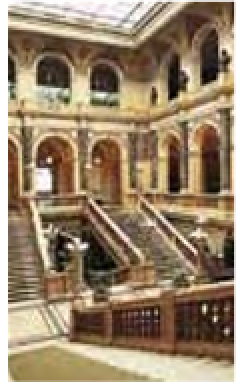Travel Reference
In-Depth Information
Wenceslas Square
This former medieval horse market began to be redeveloped in the 19th
century, fast becoming the commercial hub of Prague - in 1848 it was renamed
Wenceslas Square, in honour of Bohemia's patron saint. The majority of the
buildings seen today date from the early 20th century, and their beautiful Art
Nouveau façades illustrate the embracing of this style by Czech architects of
the time. Often the scene of historic events, the
most recent was in 1989, when crowds gathered to
celebrate the end of Communism
(see p35)
.
Top 10 Sights
1 National Museum
2 St Wenceslas Statue
3 Communist Memorial
4 Palác Lucerna
5 Palác Koruna
6 Hotel Evropa
7 Svobodné slovo Balcony
8 Franciscan Gardens
9 Church of Our Lady
of the Snows
0 St Wenceslas
St Wenceslas Statue and
the National Museum
Enjoy the faded glory
of the Hotel Evropa
over a coffee in its
charming café.
Owing to the high
volume of tourists,
Wenceslas Square is
home to many pick-
pockets. Be espe-
cially wary at the
square's north end.
St Wenceslas
Statue
The P∫emyslid prince sits
astride a horse flanked
by other Czech patrons
(below)
in Josef Myslbek's
1912 sculpture. The area
“under the tail” is a
traditional meeting place.
•
Map N5
National Museum
Invading Warsaw Pact
troops shelled the Neo-
Renaissance building in
1968, assuming it was the
Czechoslovak Parliament. The
small entry fee is worth it, if
only to see the museum's
marble stairway
(above)
and
pantheon of Czech cultural
figures
(see p110)
.
30















